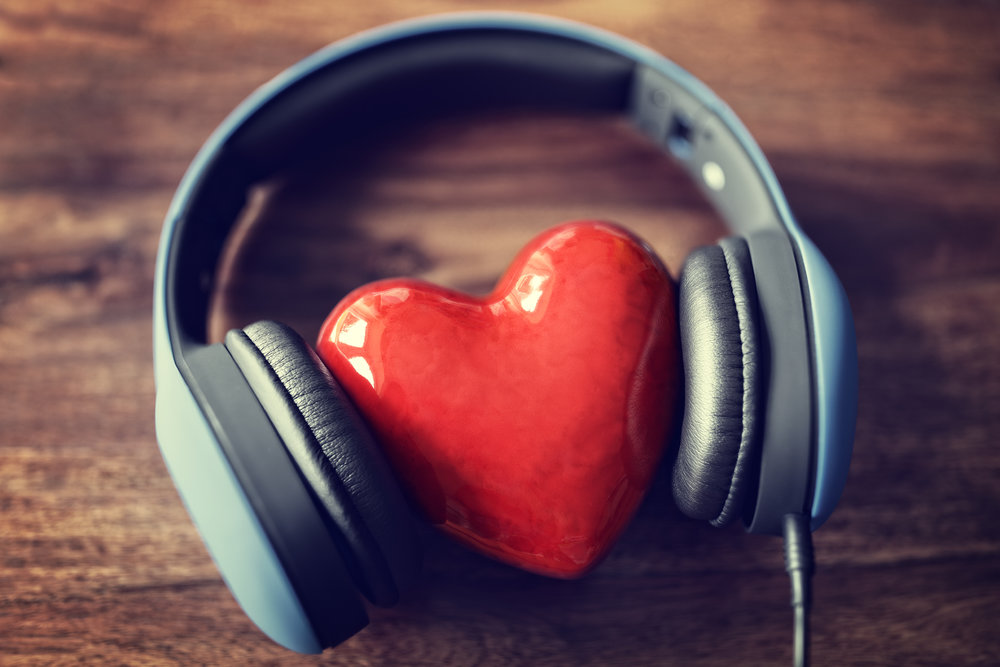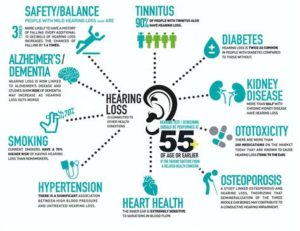Is your work environment too loud?
If you have to raise your voice to speak to someone three feet away, noise levels may be above 85 decibels, which can be troublesome, according to the U.S. Department of Labor.
“Noise may be a workplace problem if you hear ringing or humming in your ears when you leave work; if you have to shout to be heard by co-workers; or experience hearing loss when leaving work.”
The National Institute for Occupational Safety and Health offers a downloadable “Sound Level Meter App” for mobile iOS devices that measures workplace sound levels, and provides “noise exposure parameters” to help reduce occupational noise-induced hearing loss. Download App.
Audiologist Dr. Susan Rogan, Susan Rogan Hearing, who practices in LaGrange Park, advises employees to protect their ears by wearing ear plugs or noise-reducing headphones. Limit exposure to loud environments, and position yourself away from any amplified sound when possible.
Extremely loud sounds, even for a short period of time, can cause permanent hearing loss to the sensitive inner ear, according to the National Institute on Deafness and Other Communications Disorders:
“Your distance from the source of the sound, and the length of time you’re exposed to the sound are important to protecting your hearing. Noise induced hearing loss can be immediate or it can take a long time to be noticeable. It can be temporary or permanent, and affect one or both ears. Avoid noises that are too loud, too close, or for too long.”
The Occupational Safety and Health Administration requires employers to have a hearing conservation program in place if workers are exposed to loud noises, and to provide hearing protection, information, and training.

Hearing Conservation Programs
Hearing conservation programs strive to prevent initial occupational hearing loss, preserve and protect remaining hearing, and equip workers with the knowledge and hearing protection devices necessary to safeguard themselves.
Employers are required to measure noise levels; provide free annual hearing exams, hearing protection, and training; and conduct evaluations of the adequacy of the hearing protectors in use (unless changes made to tools, equipment, and schedules result in worker noise exposure levels that are less than the 85 dBA). Research indicates that workplaces with appropriate and effective hearing conservation programs have higher levels of worker productivity and a lower incidence of absenteeism.
Based on these facts/ stats the industry is seeing a shift from disposable hearing protection to custom hearing protection. The benefits for both the wearer and the employer out way disposable ear plugs – they are:
Cost
Products like dB Blockers™ are much less expensive to use than disposable earplugs or muffs. The employer will save up to 60% over 5 years on a program when an entire facility is fit. The cost per month for dB Blockers™ is lower because you can wear them for 5 years.
Comfort
Also, dB Blockers™ are hearing protection products made to fit the individual’s ear exactly, this gives the worker a custom hearing protector (earplug) that they can wear all day long.
Compliance
One of the problems of any hearing loss prevention program is getting people to wear hearing protection products and policing their use. However, with dB Blockers™ this is easy because if they are comfortable. Because they are custom molded, they only fit the correct way, like a key in a lock so it is not necessary to check insertion.
Communication
The proprietary frequency tuned filter allows communication without removal. People can communicate in noise better while wearing their dB Blockers™ hearing protection than if they were to remove them. Your hearing loss prevention program will not interfere with productivity.
Environment / Social Impact
Lastly disposables are non recycle-able or compostable so they leave a dent in the environment. Custom hearing products are made to last and will not leave a negative impact on our environment.
Learn more – Get Fitted for your own pair of Custom Hearing Protection
SOURCE
Susan Rogan Hearing : 419 N. La Grange Road, La Grange Park, IL 60526 : 708.588.0155 :www.susanroganhearing.com. (This new Downers Grove location is coming soon: 1501 Ogden Avenue, Downers Grove, IL 60515 : 630.969.1677)
https://www.osha.gov/SLTC/noisehearingconservation/hearingprograms.html






















